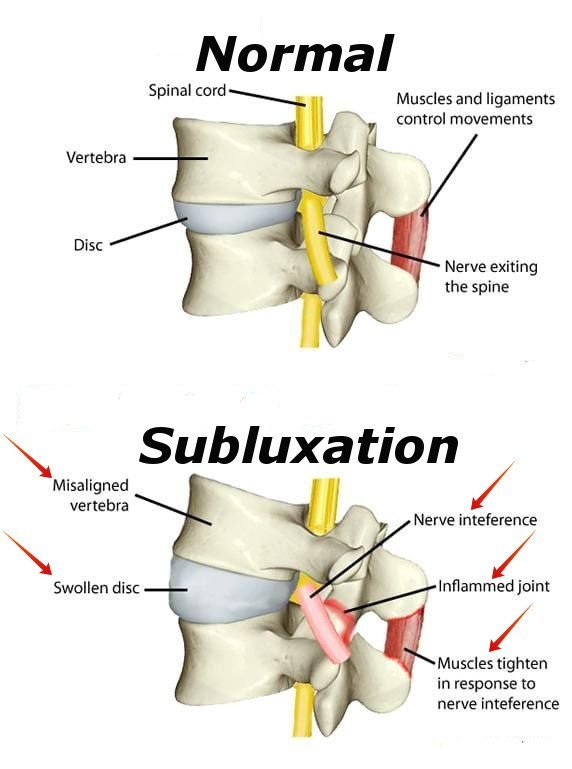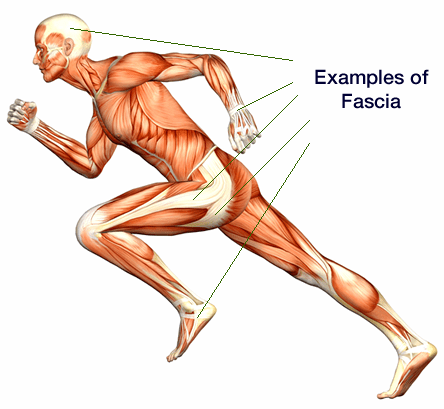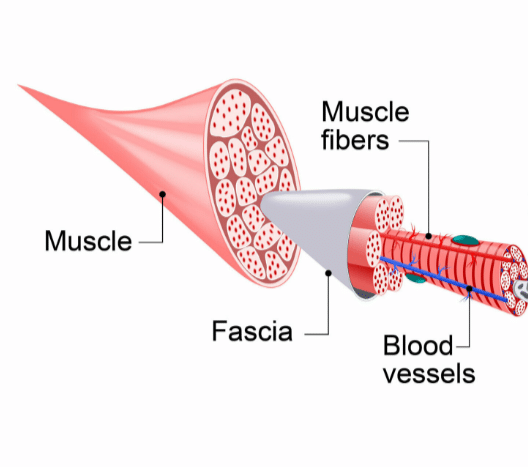Peripheral Neuropathy Treatment in New York City
What Are The Symptoms Of Neuropathy?
What Causes Peripheral Neuropathy?
Chiropractic Adjustments to Help With Peripheral Neuropathy
Circulatory Revitalization for Peripheral Neuropathy
Neuropathy, also known as peripheral neuropathy, is a painful condition that causes numbness, tingling, or burning sensations most often in the hands and feet. Peripheral neuropathy is typically caused by infections, traumatic injuries, metabolic problems such as diabetes, exposure to toxins, and occasionally inherited causes. Living with neuropathy can make life difficult, but treatments are available to help manage symptoms such as pain and inflammation. An effective holistic nonpharmacological treatment that I offer those suffering from peripheral neuropathy is a combination of chiropractic care and craniosacral therapy.
What Is Peripheral Neuropathy?
Peripheral neuropathy describes conditions damaging the peripheral nervous system, a complex bidirectional communications network between the central nervous system and the entire body.

Peripheral nerves are the communication highways for a range of sensory data about the body, such as signals for muscles to contract enabling movement, control of urination, sexual function, digestion, immune system activity and more. When peripheral nerves malfunction and there’s nerve signal disruption, healthy functioning of muscles, organs and other components of the body can grind to a halt.
With peripheral neuropathy, nerve signals are disrupted in 3 possible ways:
- Loss of normal signal transmission
- Improper communication when signal transmission is unintended
- Signaling errors that change the intended messaging
What Are The Symptoms Of Neuropathy?
There are more than 100 types of peripheral neuropathy, each with its own symptoms that vary based on the type of nerves; sensory, motor, autonomic—that have suffered damage.
- Sensory nerves communicate things like the feeling of a touch, pain from a cut, or the temperature.
- Motor nerves manage muscles and thus movement under conscious control such as grasping things, talking or walking.
- Autonomic nerves manage and control organs thereby regulating things we don’t consciously control , such as heat and gland functioning, digesting food and breathing.
Peripheral neuropathy primarily affects one or two types of nerves however can affect all three types (sensory, motor & autonomic) simultaneously.
Symptoms of peripheral neuropathy can develop over a few days, weeks, or even years and vary wildly depending on a person’s health condition and how the nerves are impacted. But common signs include pain, numbness or tingling in your extremities (hands and feet), or sensing a pins-and-needles sensation when touching a hot stovetop or cold water.

Some describe the feeling of clothing touching their skin as seeming ‘different’, how their sense of smell has changed (either heightened or lessened), along with a sense of imbalance or dizziness. These sensations can range from intermittent to constant, lasting a day or through the week. Left untreated, peripheral neuropathy can become more severe, significantly limiting a person’s mobility and/or performance of everyday tasks.
As symptoms are often related to the type of nerves damaged, affected motor nerves most commonly are accompanied with muscle weakness and can include:
- painful cramping
- uncontrolled twitching of muscle
- shrinking of muscle
Because the range of functions of sensory nerves can vary broadly, damaged sensory nerves can cause a multitude of symptoms such as your ability to feel touch and vibrations, particularly in the hands and feet. It may seem as if you’re wearing stockings or gloves when you’re not. You may feel a loss of position, and be unable to coordinate movements such as fastening buttons, walking, or keeping balance when your eyes are closed.
Peripheral neuropathy pain can be worse at night, disturbing your ability to sleep. Without any known trigger or unintended triggers, sensory pain receptors may fire spontaneously. For example, even when bedsheets are draped lightly over your body.you might experience pain from their touch.
Affected autonomic nerve symptoms include:
- Heavy sweating
- Intolerance to heat
- Inability to manage (expand & contract) blood vessels regulating blood pressure
- Gastrointestinal ailments
What Causes Peripheral Neuropathy?
Peripheral neuropathy can surface from damage to nerves or to the myelin sheath wrapped around and protecting nerves.

The possible causes of peripheral neuropathy are numerous and range from vascular and blood problems, diabetes, kidney disease, alcoholism, chemotherapy treatments, arthritis, lupus, physical trauma or pressure on the nerve, toxins, infections, genetics, or even a B12 vitamin deficiency. The aging process is also a major contributor to peripheral neuropathy. As we age, our spinal column and vertebral joints start to break down, increasing compression on spinal nerves, leading to nerve damage and neuropathy.
Chiropractic Adjustments to Help With Peripheral Neuropathy
Chiropractic treatment can help lessen the pain and discomfort of peripheral neuropathy, and in some instances stop the progression of peripheral neuropathy altogether by improving blood flow and spinal cord alignment in your body. As a chiropractor I apply hands-on methods to manipulate muscles, discs, joints, and ligaments to function efficiently, reduce pressure on nerves, and improve the range of motion in your joints.
Chiropractic treatment is a full-body approach to healing with concentration on the central nervous system, which when returned to efficient functioning often eliminates peripheral neuropathy full stop. However the leading culprit to interfering with your central nervous system and the messages sent between your brain and body are spinal subluxations.
In chiropractic care a subluxation is a mechanical disturbance and misalignment of the spinal column or cranial bones of the head and face. Though subluxations are not necessarily visible on X-rays, they can disrupt the functioning of your central nervous system, specific joints, tissue, muscle, bony structures, fascia, possibly tendons, ligaments and other parts of the anatomy.
It’s important to be aware subluxations and misalignments themselves can be painless, arise for a great many reasons, and can manifest at any point in the course of your lifetime.
Subluxations can also produce stress and damage to surrounding structures including nerves and their functioning. Any irritation, compression or narrowing of spinal nerve pathways can lead to peripheral neuropathy and if left untreated for an extended amount of time can be irreversible.
Spinal subluxations can also reduce the functioning of the blood circulatory system. For example, blood routed through the thoracic spine (that’s also being physically compressed from a bulging vertebral disc) bottlenecks and this translates generally into a 20% reduction in pressure or circulatory force in blood flow to the rest of the body. It does not take many circulatory disturbances for the body to quickly lack the power required to circulate blood properly to the extremities (hands & feet) resulting in the common peripheral neuropathy symptoms.

Subluxations and misalignments can impose pressure, pinch, and even essentially ‘strangle’ nerves exiting the spinal cord and cranial nerves coming out of the cranium. Once identified (subluxations) I deliver a gentle and precise approach to treatment, meaning you won’t need to worry about any painful popping, twisting, or pulling on your neck and across your back.
Correction of subluxations restores the neck and spine to its normal position so that any interference can be removed and recovery from peripheral neuropathy can begin.
Supplementing correction of misalignments and subluxations may include myofascial trigger point therapy to help reduce inflammation and relieve pain in the area where the nerve is affected.

Myofascial trigger points are tight regions in muscles typically caused by inflammation, trauma, and nerve issues of the muscle and can emit pain over the affected region as well as transfer pain to other parts of the body, called referral pain. Click here to learn more about my myofascial trigger point treatment.
Vascular Circulatory Revitalization (Blood Flow) to Treat Peripheral Neuropathy
Similar to the central nervous system, the spine serves as a ‘backbone’ for the branching out of the blood circulatory system, creating a blueprint for your central nervous system and reaching the far corners and end points of the body. Then the circulatory system’s arteries and veins form a web of branched off junctions that increasingly merge and consolidate the closer they are near the heart.

With peripheral neuropathy, the reason toes and fingers tend to become tingly and cold is because they’re situated at the far corners and end points of the body and furthest distance from the heart. Thus while the heart may pump blood at a healthy rate, circulatory blockages between the heart and your toes and fingers may restrict healthy blood flow. Finding these blockages and restrictions is critical to effectively treat peripheral neuropathy
This is why in addition to chiropractic care I also treat those coping with peripheral neuropathy with craniosacral therapy, which improves nerve conduction and blood circulation. Craniosacral therapy is a non-invasive hands-on gentle technique using light touch to evaluate membranes and flow of the fluids throughout both the circulatory and central nervous systems. The objective in a craniosacral therapy evaluation is to identify circulatory blockages and restrictions and facilitate release and relaxing of the body’s connective tissue, or “fascia.”

Our bodies consist of an all encompassing web of fascia. Fascia is a thin membrane sheath enveloping and penetrating structures throughout the body including nerves, muscles, blood vessels, organs, glands, the spinal cord and more – thus allowing a smooth gliding of these structures against one another.

Healthy fascia is wavy and relaxed tissue, but it can lose its malleability if damaged via inflammation, toxins, trauma or more. When damaged or unhealthy, fascial layers can tighten and restrict underlying tissue movement causing pain, limiting range of motion, and decreasing blood flow, or in sum, inflict several peripheral neuropathy symptoms onto your body.
When healthy, fascia moves smoothly distributing tension and maintaining balance within the body. However if there are fascial adhesions, due to scar tissue (surgery), posture, stress, trauma, inflammation or toxins, there can often be poor circulatory blood flow, weaker nerve impulses, and restricted range of motion. Nerves can be compressed by unhealthy fascia contributing to peripheral neuropathy symptoms centered around sensory and motor nerve malfunction.
What’s important to keep in mind is fascia helps the circulatory blood flow throughout our bodies. Tight fascia can cause arteries and veins to become constricted, reducing circulatory blood flow and thereby reducing needed nutrients and oxygen by your body’s cells.
Craniosacral therapy is the optimal approach to resolve inertial patterns that can be found in fascia and that lead to compromised fascial function and peripheral neuropathy. I specialize in restoring fascia to a state of suppleness and healthy motion, where it may otherwise have been holding patterns of stress and resultant changes in its consistency. Click here for more detailed information on my craniosacral therapy treatment.
If you or a loved one is experiencing peripheral neuropathy symptoms, don’t hesitate to reach me and I will be as helpful as possible sharing my insight once I learn of the circumstances.
Alex was born in March 1972. At the age of 7 he started to experience frequent headaches with all the conventional symptoms of a Migraine headache. His particular headache resulted in him experiencing auras, nausea and sensitivity to light with no particular trigger to the onset of the migraine.
After years of treatments, therapies and medications, his headaches were no better and Alex continued to experience them all throughout childhood and into young adulthood. Some years the headaches would come monthly, some years every two to three months and some years weekly. His headaches were incurable, there was nothing that could alleviate the symptoms and head pain. Until he experienced cranial manual therapy, which resulted in the complete eradication of his life-long Migraine Headaches.
At the age of 16 Alex noticed a mild deformity in the right side of his ribs, a slightly lower right shoulder and the experience of constant lower back pain. Although mild, a diagnosis of Idiopathic Adolescent Scoliosis had been labeled.
At the age of 18 he was involved in a serious car accident that exacerbated his lower back pain. Throughout the years Alex had tried a multitude of conventional treatments but continued to suffer on and off with lower back pain, even throughout Chiropractic school and beyond.
In 2015 and fifteen+ years out of Chiropractic school, Dr. Kaminsky participated in his first and life changing Craniosacral Therapy seminar and he was fascinated, intrigued and hooked. It all made sense, he was immediately astute to its methods and since that first seminar, and as a result of trading sessions of Craniosacral Therapy with his colleagues, his back pain subsided and till this day has never returned.
Dr. Kaminsky decided to enhance his skill-set to better serve his patients. He began reaching out to other craniosacral therapists, cranial osteopaths, and many types of leading practitioners from various fields for advise and consultations He also enrolled in Upledger continuing education seminars with a focus on mostly hands-on manual and alternative therapies.
And, as he gained knowledge with his own health issues, he has learned to help more and more patients achieve great health results.
Dr. Alex Kaminsky is headache free and low back pain free, and has committed himself to a life of learning, teaching and treating patients. His emphasis is on the patient’s stored patterns of the body and each individual healthcare needs.
